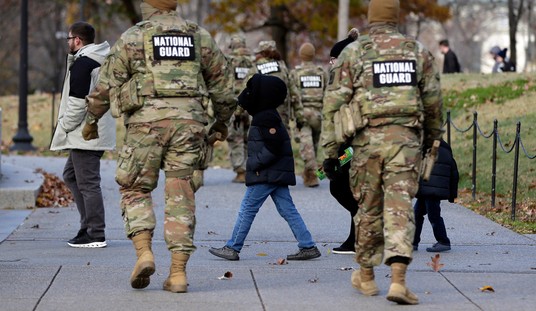After two days of suspended operations, the US and European regulators for commercial airlines have given a green light for carriers to return to full schedules at Tel Aviv’s airport. The FAA and EASA had both issued orders not to transit through Ben Gurion Airport after a Hamas missile landed a mile from the airport earlier this week, but have now given the go-ahead to resume operations after working with the Israeli government on security concerns:
The Federal Aviation Administration announced late Wednesday that it has lifted its ban on United States flights to and from Israel.
“Before making this decision, the FAA worked with its U.S. government counterparts to assess the security situation in Israel and carefully reviewed both significant new information and measures the Government of Israel is taking to mitigate potential risks to civil aviation,” the FAA said in its statement around 11:45 p.m.
The FAA said its primary mission is the “protection of people traveling on U.S. airlines,” and it will continue monitoring the “very fluid situation” near Ben Gurion International Airport in Tel Aviv.
EASA also announced this morning that they had resolved their concerns:
EASA to lift recommendation to avoid Tel Aviv Ben Gourion International Airport after contact with Israeli authorities
— EASA (@EASA) July 24, 2014
They had issued their warning on Wednesday, a day after the FAA ordered American carriers to halt operations at Ben Gurion. This led to protests over what some thought were backdoor sanctions against Israel, but in both the US and EU airlines had stopped operations already even without the NOTAM. The question again will go back to the airlines, and at least American Airlines still isn’t ready to go back to Ben Gurion:
American Airlines is not ready to resume flights to Israel, even though the FAA has lifted the ban, CEO Doug Parker told CNBC on Thursday.
“The ban was just lifted,” Parker said in a “Squawk Box” interview. “We need to access that.”
He said he’s hopeful service will resume by the airline’s next scheduled flight to Tel Aviv, late Thursday from Philadelphia, “but we have to make sure, as all airlines do, that conditions are indeed stable,”
“The FAA lifting the ban is a necessary, but not a sufficient, condition,” Parker said, while pointing out that American Airlines canceled flights before the FAA put in place the ban.
The issue here wasn’t a government sanction, but corporate caution, especially in a season of air disasters. That may frustrate those who worry about handing terrorists a victory, but having a known risk present during operations creates enormous risks, both legal and moral, for any airline that chooses to operate under that threat — especially in the highly litigious US.
It appears that we can add another air disaster to the list of MH17 and the flight that crashed in Taiwan yesterday. This morning, a chartered Al Algeria flight left from Ouagadougou, Burkina Faso and was en route to Algiers for an hour when it disappeared off the radar screen. Like the Malaysia Air flight last week, the Swiftair plane flew over a conflict zone, but the disappearance happened shortly after a weather-related diversion:
An Air Algerie flight with 116 people on board has dropped off radar, prompting a search for the missing plane, the airline’s operator said Thursday.
Flight 5017 lost radar contact 50 minutes after takeoff from Ouagadougou, Burkina Faso, early Thursday. It was supposed to arrive at Algiers’ Houari Boumediene Airport about four hours later.
The plane, an MD-83, was carrying 110 passengers, two pilots and four crew members. The MD-83 is part of the McDonnell Douglas MD-80 family of twin-engine, single-aisle jets.
The plane belongs to a private Spanish company, Swiftair, but it appears to have been operated by Air Algerie.
Algeria has a history of airline disasters, but also a big problem with Islamist extremists. Questions have also been raised about the age and maintenance of the aircraft, which might be an issue if the flight couldn’t avoid severe weather. It’s also possible that the plane lost communications and landed elsewhere, although by this time one would assume that someone would have gotten the message by now if that was the case.
It might also have been an air-traffic control mishap:
“The plane was not far from the Algerian frontier when the crew was asked to make a detour because of poor visibility and to prevent the risk of collision with another aircraft on the Algiers-Bamako route,” the Air Algerie source said.
“Contact was lost after the change of course.”
The possibilities are almost endless at this point, but the likelihood of a happy ending here is shrinking by the minute. We’ll update as necessary.
Update: International Business Times reports that the flight crashed in Niger due to bad weather:
The disappeared Air Algerie flight AH5017 has crashed in Niger after flying through violent storms, it has been confirmed.
Algerian television station Elnahar confirmed the plane went down due to bad weather.
The region was badly affected by violent storms and it was earlier said the plane was rerouted while it was flying over Mali.
The plane crashed after passing the capital of Niger and it is presumed all 116 people on board have been killed. The flight was said to have been found near Niamey, the capital of Niger.
Very sad news; our prayers are with the families.









Join the conversation as a VIP Member